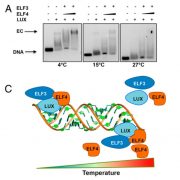
Understanding Evening Complex activity (PNAS)
Plant Science Research WeeklyProcesses like photosynthesis and growth follow a well-defined rhythm driven by a 24-h internal clock that is controlled by three principal interacting transcription–translation feedback loops: the morning, central, and evening loops. The Evening Complex (EC), which is active at the end of the day,…
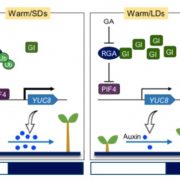
GIGANTEA shapes the photoperiodic rhythms of termomorphogenic growth in Arabidopsis (Mol. Plant)
Plant Science Research WeeklyPlants evolved molecular mechanisms to integrate seasonal changes with developmental programs. For example, warmer temperatures and increasing day-length mark the transition from winter to spring, and trigger flowering. Now, the synchronisation of ambient temperature and photoperiod is perturbed by global…

The circadian clock influences the long-term water use efficiency of Arabidopsis (Plant Physiol.)
Plant Science Research WeeklyThe volume of water required for a given crop yield is largely influenced by the plant's Water Use Efficiency (WUE). Considering that the majority of the water taken up by plants is lost through transpiration, WUE can be improved by modulating stomatal opening. Besides light and temperature, stomatal…
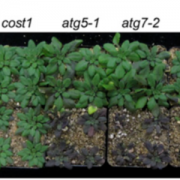
A plant-specific protein, COST1, mediates autophagy to promote drought tolerance (PNAS)
Plant Science Research WeeklyMuch remains to be learned about the sensing and signaling mechanisms controlling growth in response to drought. To dissect how plants control drought via autophagy, Bao et al. found a plant-specific protein, COST1 (CONSTITUTIVELY STRESSED 1) containing a DUF641 (domain of unknown function 641) domain,…
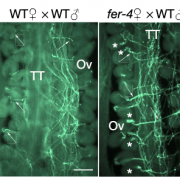
FERONIA controls pectin- and nitric oxide-mediated male–female interaction (Nature)
Plant Science Research WeeklyIn flowering plants, fertilization occurs when a pollen tube, growing down the transmitting tissue, arrives at the ovule, ruptures, and releases its content of sperm cells. The pollen tube is guided towards the ovule by LUREs, small cysteine-rich secreted peptides. Timely rupturing and sperm release…
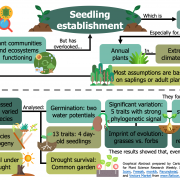
Ecological strategies begin at germination: Traits, plasticity, and survival in the first four days of plant life ($) (Funct. Ecol.)
Plant Science Research WeeklySeedling establishment is seldom addressed in trait-based ecology. Advocating for the importance of this stage of a plants' life, Larson et al. assessed how functional traits varied in newly emerged seedlings and how this was related to their phylogeny and survival under drought. The authors germinated…
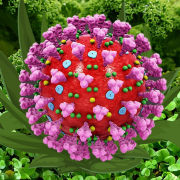
Plant Science Research Weekly: April 3rd
Blog, WWR Full PostEditorial: Redeploying plant defences
With COVID19 ravaging across the globe, the medicinal value of plants and related research fields e.g., phytochemistry, ethnobotany, etc., is presently in focus. The drug development chain, though extremely promising, is not an immediate solution as it is a long,…
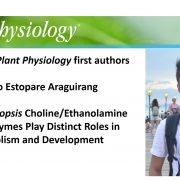
Recognizing Plant Physiology authors: Galileo Estopare Araguirang
Plant Physiology, Plant Physiology: Author ProfilesGalileo Estopare Araguirang, first author of The 4 Arabidopsis Choline/Ethanolamine Kinase Isozymes Play Distinct Roles in Metabolism and Development
Current Position: PhD Candidate (Biochemistry) in Prof. Philip Wigge’s Lab under the prestigious International Max Planck Research School- Primary Metabolism…
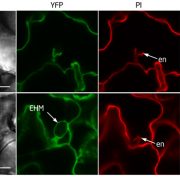
Plant Pathogens Recruit PI(4,5)P2 to the Interfacial Membrane for Disease Development
Blog, Research, The Plant Cell, The Plant Cell: In a NutshellQin et al. show that PI(4,5)P2 functions as a susceptibility factor for plant disease. Plant Cell https://doi.org/10.1105/tpc.19.00970
By Li Qin and Yangdou Wei. Department of Biology, University of Saskatchewan, Canada
Background: Biotrophic plant pathogens such as powdery mildews and rusts require…

